Office Lighting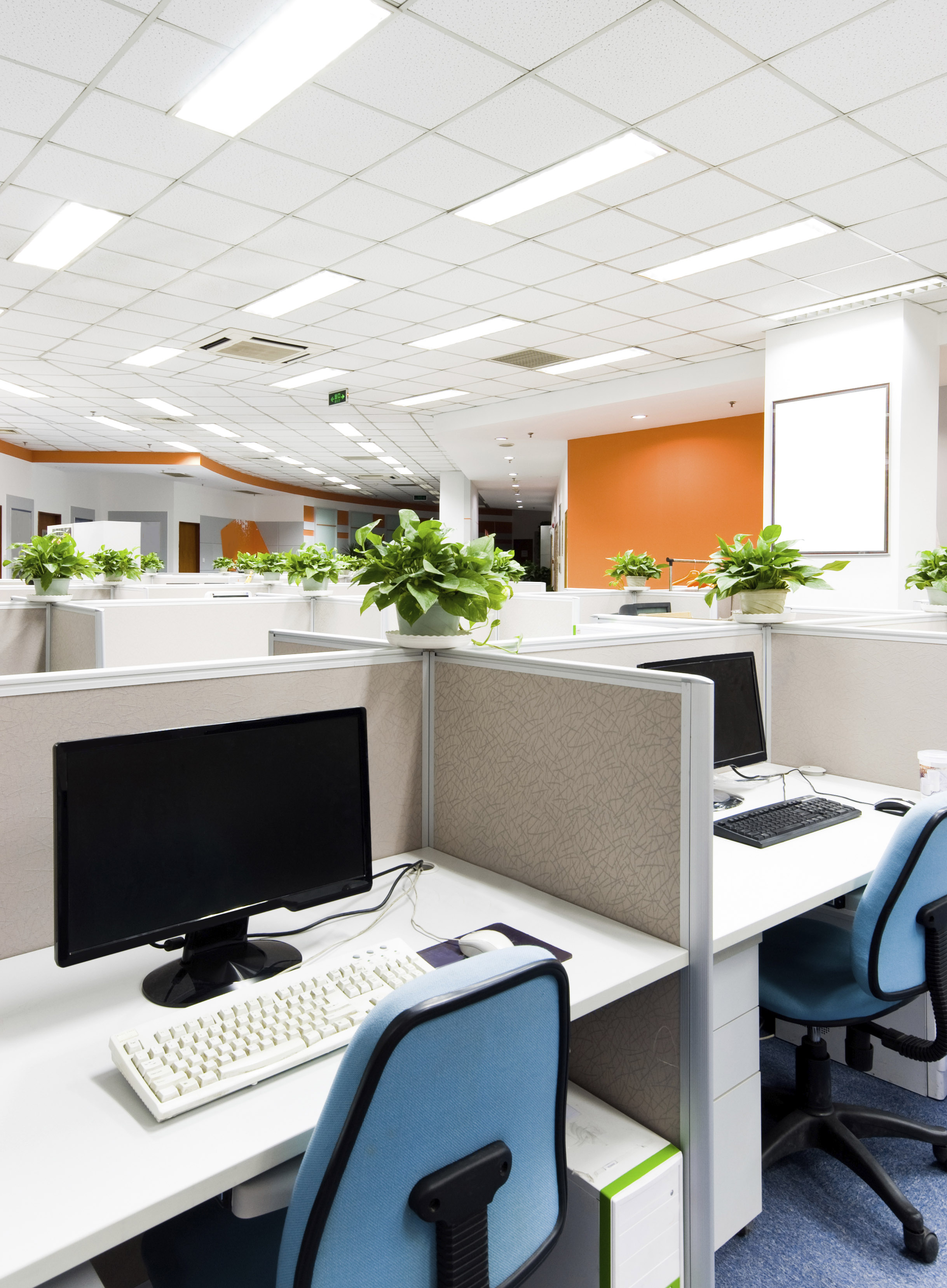
Lighting design for office buildings has focused largely on the amount of light for work, strategies to reduce visual discomfort, and the use of daylight as a means to reduce energy in buildings. Little attention has been given to understanding the experience of light, especially how it affects occupants’ psychological and physiological systems, including circadian functions that regulate sleep, mood, and alertness. If health benefits are identified, this could have far reaching effects on sustainable lighting design as a means to achieve energy goals as well as to enhance the health and wellbeing of office workers, improve overall work effectiveness, and reduce long-term health problems associated with circadian disruption, including sleep problems, mood disorders, diabetes, obesity, cardiovascular disease and cancer.
In 2013, the U.S. General Services Administration (GSA) awarded a contract to the LRC to study the correlation of daylighting with health and wellbeing, to assess the building occupant experience of light, and to identify health outcomes linked with measured light exposure in Federal High-Performance Green Buildings. For this project, LRC researchers used the Daysimeter, a calibrated, personal light and activity sensor that continuously records and stores data for measuring circadian light (circadian stimulus or CS), that is, light that affects the circadian system. LRC researchers also conducted photometric measurements to assess the potential for CS in the buildings. Current research involves field testing novel luminaires developed by the LRC to promote circadian entrainment and alertness in the office environment.
Several buildings were evaluated during different seasons. Results reports follow:
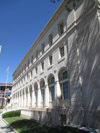 Wayne N. Aspinall Federal Building: Grand Junction, Colorado
Wayne N. Aspinall Federal Building: Grand Junction, Colorado
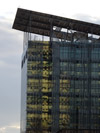 Edith Green-Wendell Wyatt Federal Building: Portland, Oregon
Edith Green-Wendell Wyatt Federal Building: Portland, Oregon
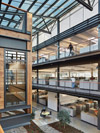 Federal Center South Building: Seattle, WA
Federal Center South Building: Seattle, WA
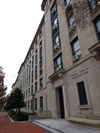 GSA Central Office Building: Washington, DC
GSA Central Office Building: Washington, DC
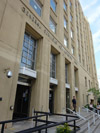 GSA Regional Office Building: Washington, DC
GSA Regional Office Building: Washington, DC
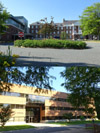 Lighting Guidelines Field Demonstrations
Lighting Guidelines Field Demonstrations
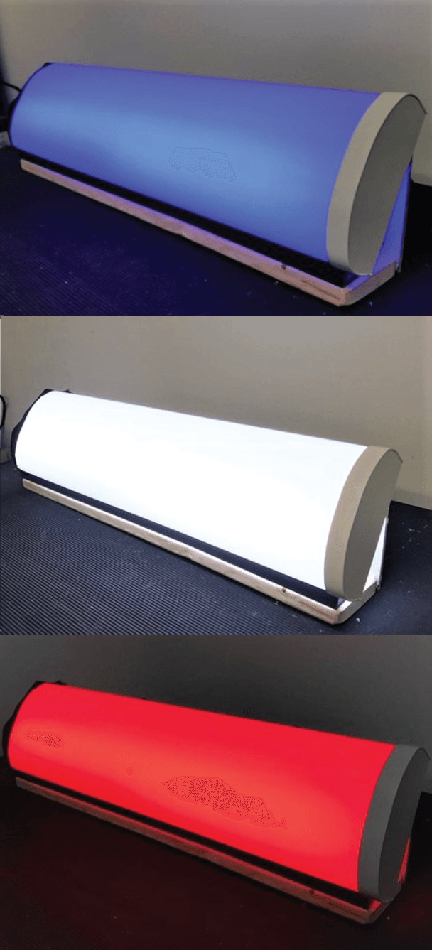 Increasing Circadian Light Exposure in Office Spaces
Increasing Circadian Light Exposure in Office Spaces
Summary Poster: Light, Alertness, and Circadian Entrainment in Three Office Buildings ![]()
Research Papers and Posters
Light, Entrainment and Alertness: A Case
Study in Offices ![]()
-
Sponsor:
- U.S. General Services Administration
-
Related Publication:
- Figueiro MG, Steverson B, Heerwagen J, Yucel R, Roohan C, Sahin L, Kampschroer K, Rea MS. 2019. Light, entrainment and alertness: A case study in offices.
Lighting Research & Technology.
doi: 10.1177/1477153519885157
Office Lighting for Circadian Health and Wellbeing ![]()
-
Sponsor:
- U.S. General Services Administration
-
Related Publication:
- Figueiro MG, Steverson B, Heerwagen J, Kampschroer K, Hunter CM, Gonzales K, Plitnick B, Rea MS. 2017. The impact of daytime light exposures on sleep and mood in office workers. Sleep Health: Journal of the National Sleep Foundation. 3(3):204-215.
-
Sponsors:
- U.S. General Services Administration
- U.S. Department of State
-
Related publication:
- Figueiro MG, Kalsher M, Steverson BC, Heerwagen J, Kampschroer K, Rea MS. 2019. Circadian-effective light and its impact on alertness in office workers. Lighting Research & Technology, 51(2):171-183.
-
Sponsor:
- U.S. General Services Administration
-
Related publications:
- Figueiro MG, Kalsher M, Steverson BC, Heerwagen J, Kampschroer K, Rea MS. 2019. Circadian-effective light and its impact on alertness in office workers. Lighting Research & Technology, 51(2):171-183.
- Figueiro MG, Steverson BC, Heerwagen J, Rea MS. Circadian light and its impact on alertness in office workers: A field study. IES 2017 Annual Conference. Portland, OR. August 10-12, 2017.
Office Lighting and Personal Light Exposures in Two Seasons: Impact on Sleep and Mood ![]()
-
Sponsor:
- U.S. General Services Administration
-
Related publication:
- Figueiro MG, and Rea MS. 2016. Office lighting and personal light exposures in two seasons: Impact on sleep and mood. Lighting Research & Technology, 48(3):352-364.
Daylight in Office Buildings: Impact of Building Design on Circadian Light Exposures ![]()
Lighting in Federal High-Performance Green Buildings ![]()
-
Sponsor:
- U.S. General Services Administration
-
Related publication:
- Figueiro MG, Steverson B, Heerwagen JH and Rea MS. Daylight in office buildings: impact of building design on personal light exposures, sleep and mood. 28th CIE SESSION. Manchester, UK. June 28 – July 4, 2015
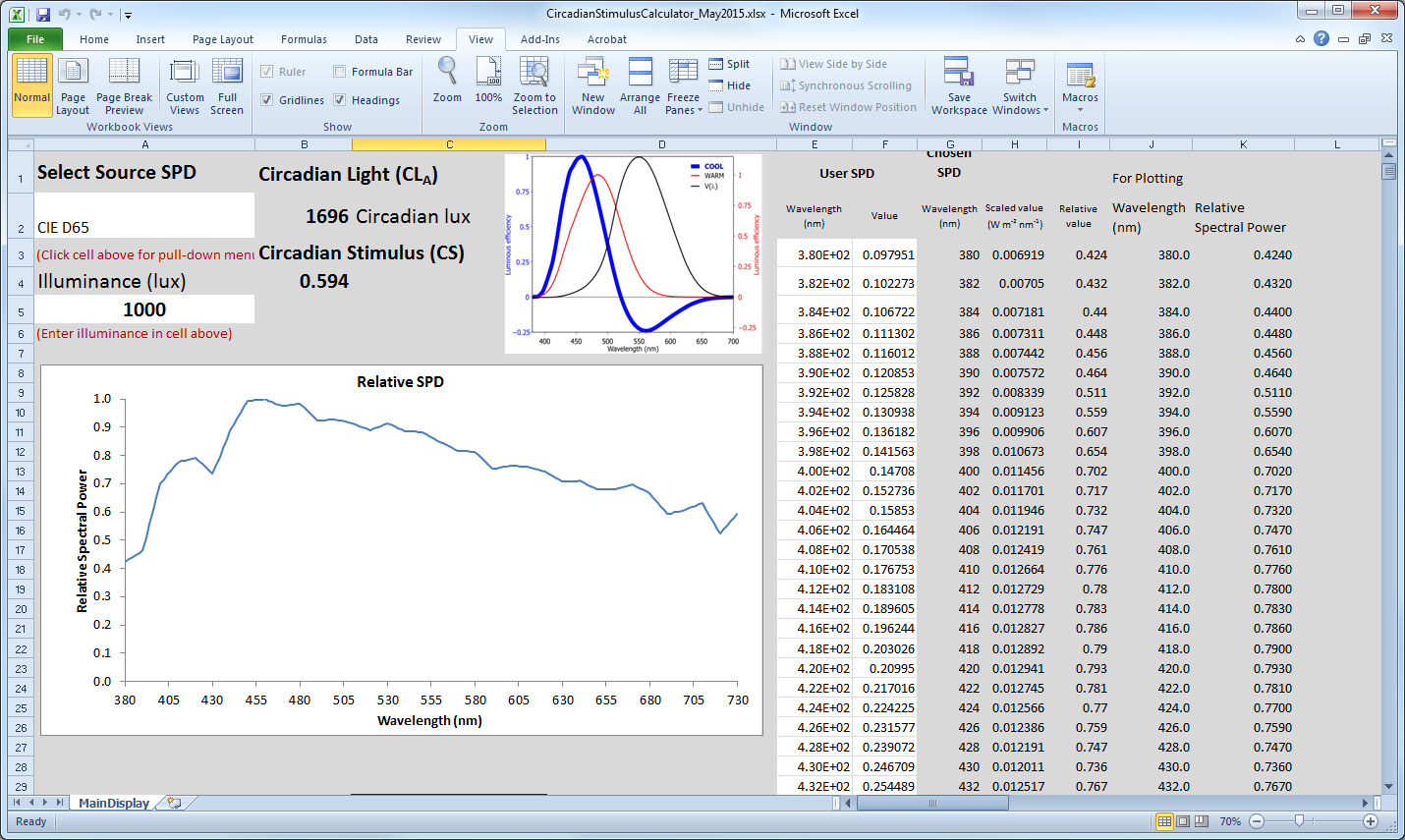 The Lighting Research Center developed a circadian stimulus (CS) calculator to determine CS for any combination of source type and light level in photopic lux. The calculator is available on this page. This tool was designed to help lighting professionals select light sources and targeted photopic light levels that will increase the potential for circadian light exposure in a building.
The Lighting Research Center developed a circadian stimulus (CS) calculator to determine CS for any combination of source type and light level in photopic lux. The calculator is available on this page. This tool was designed to help lighting professionals select light sources and targeted photopic light levels that will increase the potential for circadian light exposure in a building.
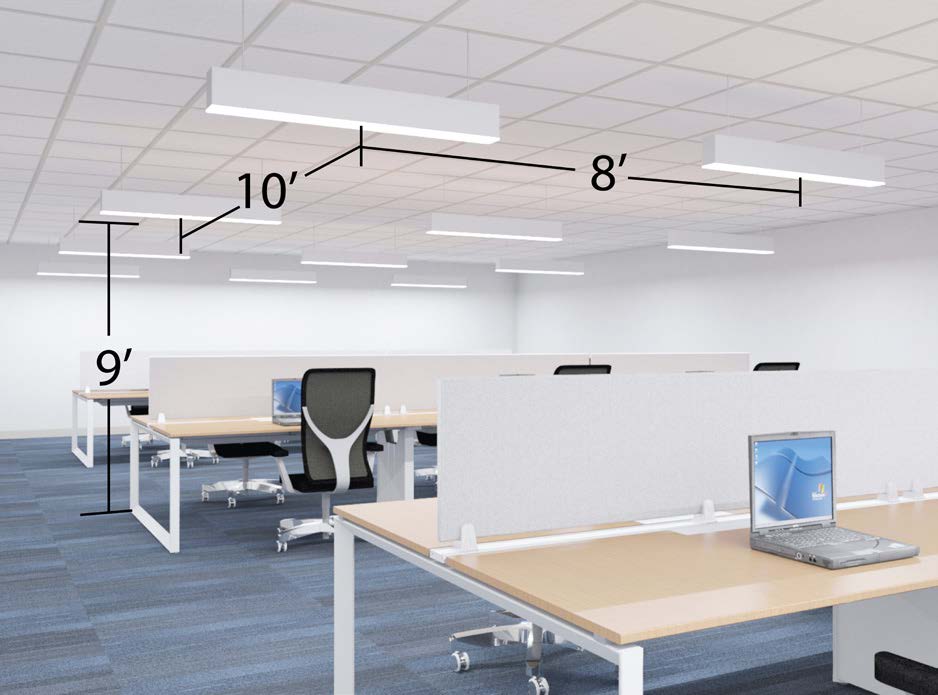 These look-up charts provide a quick and easy way to estimate the potential average circadian stimulus (CS) value in a space using conventional lighting metrics.
These look-up charts provide a quick and easy way to estimate the potential average circadian stimulus (CS) value in a space using conventional lighting metrics.
- Look-up chart, 2 x 4 troffer
- Look-up chart, direct
- Look-up chart, direct-indirect
- Look-up chart, indirect
- Look-up chart, recessed downlight
LRC research on office lighting has been featured in various media reports. For more featured media, visit our Newsroom Media Page.
New studies show cycles of blue and red light promote circadian entrainment
LEDs Magazine - December 2019
LRC collaboration with GSA finds morning blue light and afternoon red light promote entrainment and increase alertness in office workers.
Light the Way: Human-Centric Lighting Puts Occupant Comfort First
Retrofit Magazine - October 2019
"We need to stop designing lighting just to save energy or occupy a ceiling grid. We need to start focusing on the occupants of the building." –Mariana Figueiro, LRC Director
Does Circadian Lighting Work?
Architect Magazine - June 2019
Lighting manufacturers are offering systems allegedly attuned with our circadian rhythms. Three experts, including Dr. Mariana Figueiro of the Lighting Research Center, discuss whether these products have an impact.
The Lighting Research Center Is Making Exciting Connections Between Light, Color, and Well-Being
Metropolis Magazine - April 2019
Research scientist Mariana Figueiro prescribes light exposure the way a medical doctor might call for a round of high-powered antibiotics: in precise doses at specific times of day. To achieve optimal sleep and mood patterns, for instance, she advises going out into daylight for at least 30 minutes first thing in the morning.
"Health Check"
BBC World News - March 28, 2018
Listen to this BBC report on LRC Office Lighting research [story starts at 18:00 minutes]
A Greener, More Healthful Place to Work
The New York Times - January 11, 2018
Dr. Mariana Figueiro offers her expert views on the importance of good lighting and circadian entrainment in the workplace in this article published in The New York Times.
Human-centric lighting takes hold in the commercial workplace
LEDs Magazine - October 17, 2017
LRC Director Dr. Mariana Figueiro explains the results of human-centric lighting studies at five General Services Administration office locations in the US. Participants receiving prescribed dosages of circadian-effective light exhibited improved sleep and reduced depression and stress.
Lighting Focused on Occupant Health and Well-Being
FacilitiesNet - September 2017
More and more research is showing how so-called "human-centric" lighting can have positive effects on worker mood, productivity, and other positive benefits—in this article penned by the LRC's David Pedler and Dr. Mariana Figueiro.
Daily Wisdom: Morning sun can get you on a better sleep schedule
Furthermore - June 14, 2017
Interview with Dr. Mariana Figueiro, Professor and Light and Health Program Director at the Lighting Research Center. "Seek light during the day from any source, electric or daylight, especially in the morning," she advises.
Morning daylight exposure tied to a good night's sleep
Reuters - May 18, 2017
Workers who are exposed to sunlight or bright indoor lights during the morning hours sleep better at night and tend to feel less depressed and stressed than those who don't get much morning light, according to a recent study by the Lighting Research Center at Rensselaer Polytechnic Institute.
Beyond The Task Of Illumination
Facility Executive magazine - April 2017
Americans spend more than 90% of their time indoors, yet little attention has been given to understanding how light affects health in the built environment. A team of researchers at the Lighting Research Center at Rensselaer Polytechnic Institute is working to change that.
Scientists Say This Simple Little Office Hack Will Increase Your Productivity
Money - April 3, 2017
You've probably heard of circadian rhythms, the natural body cycles that help us to do things like fall asleep at nighttime and be active during the day.
Now, a group of researchers are working to manipulate those rhythms to make us more productive at work.
The Rhythm of Light: Circadian Lighting Supports Health and Wellbeing in the Office Environment
Retrofit magazine - March/April 2017
In a project funded by the U.S. General Services Administration (GSA), LRC researchers are investigating how to effectively use electric lighting to ensure that every worker receives enough light during the day to support health and wellbeing in the office environment.
Quantifying Circadian Light and Its Impact
Architectural Lighting - February 2017
In the most recent issue of Architectural Lighting magazine, LRC scientists Mariana Figueiro and Mark Rea explain how to quantify circadian light and its impact. The article was also published online, and quickly rose to become one of the most popular and widely-shared on the magazine's website.
How to design circadian lighting - by top scientists
LUX Magazine - December 2016
US scientists have developed a special tool to help designers create lighting installations which affect the sleep-wake cycle.
SIL Conference session to focus on the effects of lighting on health
LEDs Magazine - November 11, 2016
At the upcoming Strategies in Light conference (Feb. 28 - March 2, 2017; Anaheim, CA) the lead speaker in the Non-Visual Effects of Lighting session will be Dr. Mariana Figueiro, LRC Light and Health Program Director. In this essay, Dr. Figueiro highlights some of the topics she will discuss in her SIL conference presentation, including healthy lighting for adolescents, older adults, office workers, and night-shift workers.
Designing with Circadian Stimulus
LD+A - October 2016
The Lighting Research Center proposes a metric for applying circadian light in the built environment.
The science behind why office lighting feels like it can make or break your day
Quartz - Aug. 7, 2016
"It's a long putt from lighting to mood. There are a lot of things in between we don't fully understand," says Mark Rea.
Circadian Lighting [video]
National Lighting Bureau - Nov. 29, 2015
Panel discussion featuring LRC Professor Mariana Figueiro, Kevin Kampschroer of the U.S. General Services Administration (GSA) and Mary Beth Gotti of GE Lighting.
TEDMED: Mariana Figueiro - May 5, 2015
How can we harness the power of light to improve health? Mariana Figueiro, Light & Health Program Director at the Lighting Research Center, explains in her TEDMED talk. Watch the video. For more information, also see Dr. Figueiro's TEDMED guest blog post.
View a list of publications, journal articles, and conference papers on light and health issues by Lighting Research Center scientists.



